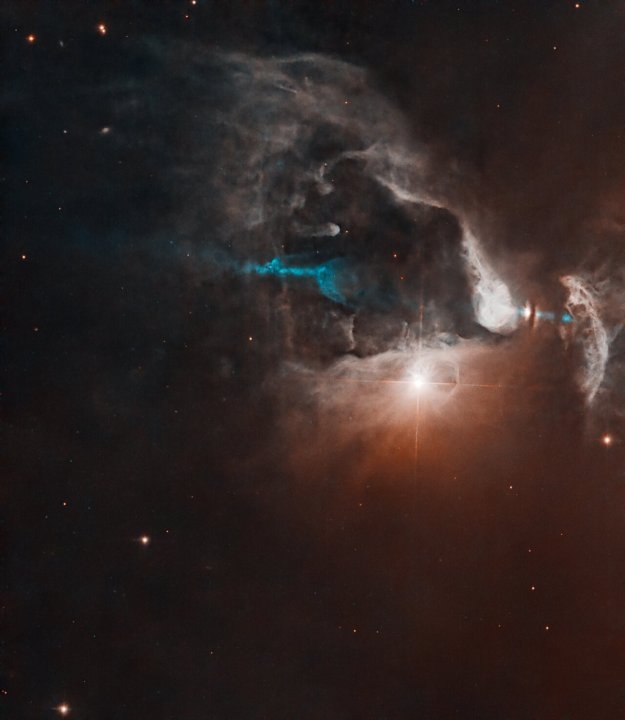A new image from the Hubble Space Telescope shows the drama that unfolds as a new star is born. Within a swirling cloud of dust and gas, a newly formed star is giving off powerful jets that blast away material and cut through the nearby dust of the surrounding nebula to create this stunning vista.
The image shows a system called FS Tau, located 450 light-years away in a region called Taurus-Auriga. Within this region are many stellar nurseries with new stars forming, making it a favorite target for astronomers studying star formation. But this particular system stands out for the dramatic nature of its newborn star, which has formed an epic structure called a Herbig-Haro object.

A Herbig-Haro object is the structure created by jets of material coming from a young star. A star forms from clouds of dust and gas when this material clumps together to form a small knot. Over time, this knot attracts more and more material due to gravity, until it eventually collapses to form a core and becomes a protostar. As the protostar is dense, it attracts even more material due to gravity, growing over time and getting hotter as the material rubs together, creating friction. However, the star isn’t yet creating its own heat via fusion, so it isn’t yet a main sequence star like our sun.
The growing protostar can still become very hot though, with heat generated by the collapsing of the dust cloud and the gradual accretion of matter. This heat gives the protostar enough energy to shine, even though it isn’t creating its own heat and light from fusion yet. And with this energy, the protostar can eject two superfast jets of matter, each coming from the opposite direction. These jets of gas move so quickly that they collide with nearby dust and gas to create illumination — and it’s these jets that define a Herbig-Haro object.
The object FS Tau is unusual in that the protostar is giving off an asymmetrical double-sided jet, thought to be because matter is being expelled at different rates. It is also a binary system, with the Herbig-Haro object FS Tau B making up one half of a pair of stars along with FS Tau A, the bright object near the center of this image.
Editors’ Recommendations
This post was originally published on Digital Trends




